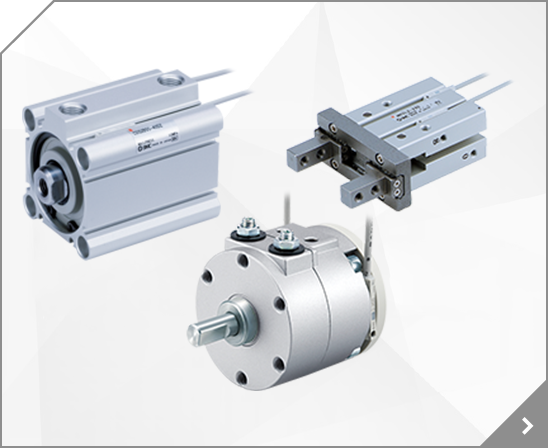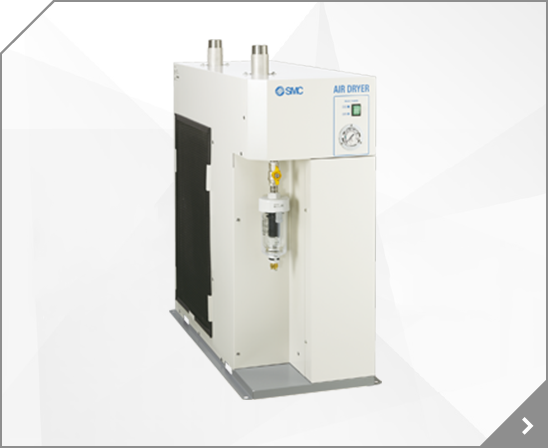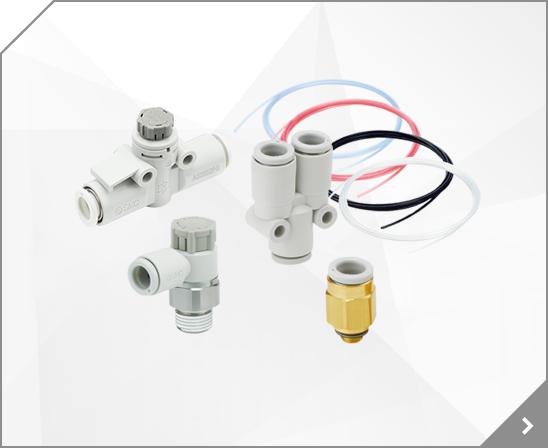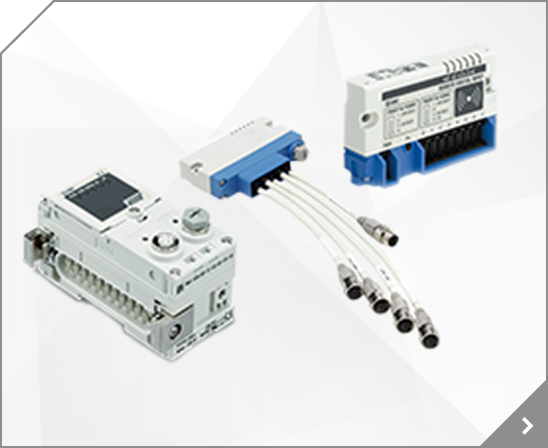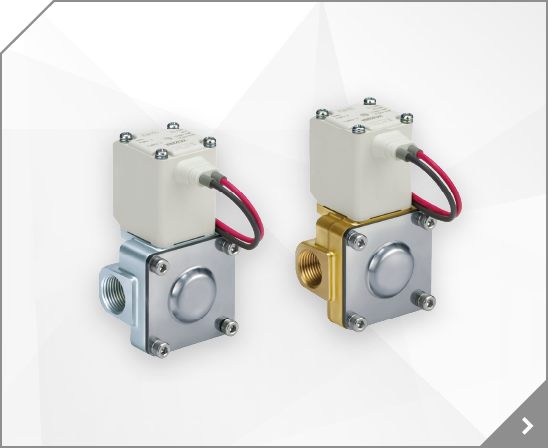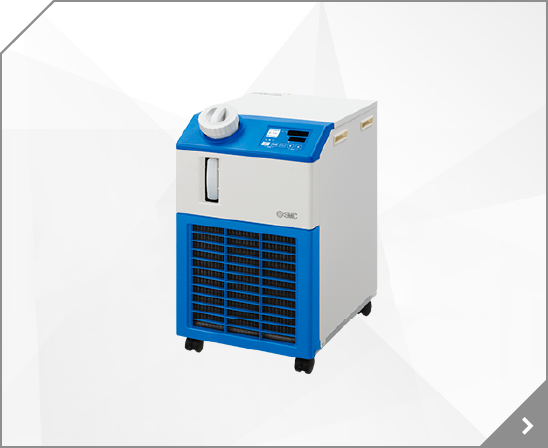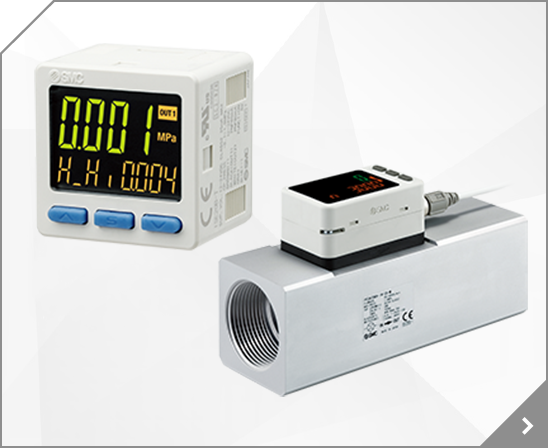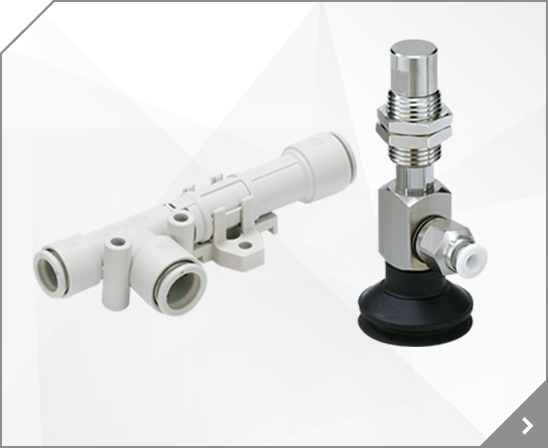
Size: 1 (100), Valve Type: 1 (N.C.), Seal Material: A (NBR), Pressure Range: 140 (0 to 14 MPa), Thread: Rc, Port Size: 10 (3/8, SGH100), Pilot Valve: H (VO307, for 10/14 MPa), Voltage: 5 (24VDC), Electrical Entry: D (DIN Terminal)
Size: 1 (100), Valve Type: 1 (N.C.), Seal Material: A (NBR), Pressure Range: 140 (0 to 14 MPa), Thread: Rc, Port Size: 10 (3/8, SGH100), Pilot Valve: H (VO307, for 10/14 MPa), Voltage: 5 (24VDC), Electrical Entry: D (DIN Terminal), Light/Surge Suppressor: Z (Light/Surge Suppressor, Non-polar)
Size: 1 (100), Valve Type: 1 (N.C.), Seal Material: B (FKM), Pressure Range: 140 (0 to 14 MPa), Thread: Rc, Port Size: 10 (3/8, SGH100), Pilot Valve: H (VO307, for 10/14 MPa), Voltage: 5 (24VDC), Electrical Entry: D (DIN Terminal), Light/Surge Suppressor: Z (Light/Surge Suppressor, Non-polar)
. · Overall width reduced by up to 14 mm. · Mountable on 2 surfaces. · Auto switch can be mounted from the front. · Weight reduced by up to 14%. · Mounting compatibility with existing models. · The cushion seal is replaceable. · Easy adjustment of the cushion valve. · The ports, cushion valve and auto switch are all located on the same surface for improved usability. · Many variations of
Through the combination of parallel I/O inputs, 14 points of positioning are available.? The speed and acceleration of the positioning can be set by the switch for each operating direction.? A single signal sent to a dedicated terminal returns an actuator to the home position.?
Through the combination of parallel I/O inputs, 14 points of positioning are available.? The speed and acceleration of the positioning can be set by the switch for each operating direction.? A single signal sent to a dedicated terminal returns an actuator to the home position.?
Through the combination of parallel I/O inputs, 14 points of positioning are available.? The speed and acceleration of the positioning can be set by the switch for each operating direction.? A single signal sent to a dedicated terminal returns an actuator to the home position.?
Through the combination of parallel I/O inputs, 14 points of positioning are available.? The speed and acceleration of the positioning can be set by the switch for each operating direction.? A single signal sent to a dedicated terminal returns an actuator to the home position.?
Through the combination of parallel I/O inputs, 14 points of positioning are available.? The speed and acceleration of the positioning can be set by the switch for each operating direction.? A single signal sent to a dedicated terminal returns an actuator to the home position.?
Through the combination of parallel I/O inputs, 14 points of positioning are available. The speed and acceleration of the positioning can be set by the switch for each operating direction. A single signal sent to a dedicated terminal returns an actuator to the home position.
Through the combination of parallel I/O inputs, 14 points of positioning are available. The speed and acceleration of the positioning can be set by the switch for each operating direction. A single signal sent to a dedicated terminal returns an actuator to the home position.
Through the combination of parallel I/O inputs, 14 points of positioning are available. The speed and acceleration of the positioning can be set by the switch for each operating direction. A single signal sent to a dedicated terminal returns an actuator to the home position.
Through the combination of parallel I/O inputs, 14 points of positioning are available. The speed and acceleration of the positioning can be set by the switch for each operating direction. A single signal sent to a dedicated terminal returns an actuator to the home position.
Through the combination of parallel I/O inputs, 14 points of positioning are available. The speed and acceleration of the positioning can be set by the switch for each operating direction. A single signal sent to a dedicated terminal returns an actuator to the home position.
Through the combination of parallel I/O inputs, 14 points of positioning are available. The speed and acceleration of the positioning can be set by the switch for each operating direction. A single signal sent to a dedicated terminal returns an actuator to the home position.
Through the combination of parallel I/O inputs, 14 points of positioning are available. The speed and acceleration of the positioning can be set by the switch for each operating direction. A single signal sent to a dedicated terminal returns an actuator to the home position.
Through the combination of parallel I/O inputs, 14 points of positioning are available. The speed and acceleration of the positioning can be set by the switch for each operating direction. A single signal sent to a dedicated terminal returns an actuator to the home position.
Through the combination of parallel I/O inputs, 14 points of positioning are available. The speed and acceleration of the positioning can be set by the switch for each operating direction. A single signal sent to a dedicated terminal returns an actuator to the home position.
Through the combination of parallel I/O inputs, 14 points of positioning are available. The speed and acceleration of the positioning can be set by the switch for each operating direction. A single signal sent to a dedicated terminal returns an actuator to the home position.
Through the combination of parallel I/O inputs, 14 points of positioning are available. The speed and acceleration of the positioning can be set by the switch for each operating direction. A single signal sent to a dedicated terminal returns an actuator to the home position.
